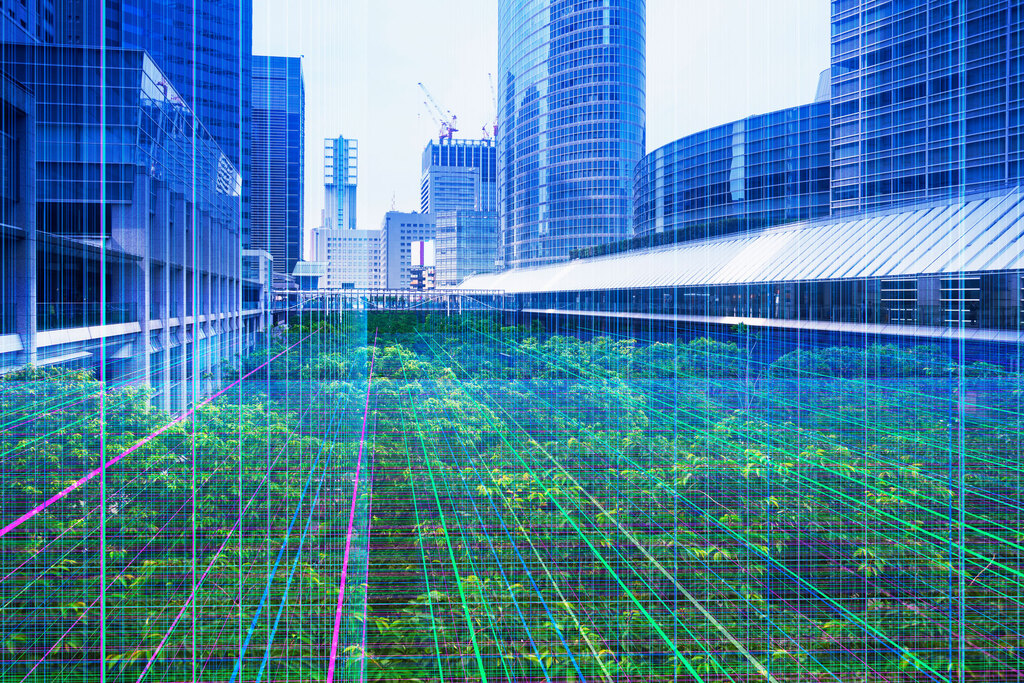Note: This website was automatically translated, so some terms or nuances may not be completely accurate.
Can Smart Cities Be the Key to Regional Revitalization? Explaining the Changes Advanced Technology Brings to Local Areas with Case Studies
Since the pandemic, many people have likely experienced significant changes in their work styles. For those in jobs that allow remote work, some may have almost completely stopped going to the office. These shifts in work patterns have also led to changes in where people live. With the need to commute to the city center eliminated, it seems more people are becoming interested in moving to regional areas. Indeed, survey results (conducted by Kochi City, Kochi Prefecture in 2021) indicate that up to 30% of people either moved to regional areas or became more interested in doing so due to the pandemic. This suggests that the long-held value of centralization in urban centers is shifting due to societal circumstances.
Furthermore, these changes may also be driven by technological advancements. This article focuses on "smart cities" to explore their potential for regional revitalization.
What is the "Smart City" Strategy, Gaining Attention Due to Technological Advancement and Population Concentration?
In recent years, new technologies have been developed across various fields, such as IoT, AI, and big data utilization, and are being applied to drive economic development and solve social issues. A "smart city" is a city or district that aims to solve problems and enhance residents' well-being by leveraging these advanced technologies. The Ministry of Land, Infrastructure, Transport and Tourism's Urban Development Bureau defines a smart city as "a sustainable city or district where management (planning, development, administration, operation, etc.) is conducted while utilizing new technologies such as ICT to address various urban challenges, thereby achieving overall optimization." It is advancing initiatives to realize this vision.
Overseas, smart city development is progressing primarily in major cities. Representative examples include Amsterdam in the Netherlands and Dubai in the United Arab Emirates. In Amsterdam, a public-private partnership organization called "Amsterdam Smart City (ASC)" was established in 2009. Government agencies, businesses, and research institutions collaborated to begin initiatives toward smart city development. For instance, smart meters installed in homes and commercial facilities visualize energy usage, transforming citizens' environmental awareness. Efforts also focus on promoting electric vehicles and solar power generation to advance efficient energy use.
Dubai aims to become a world-class smart city, equipping the entire city with ICT infrastructure. E-government and paperless processes have advanced, enabling access to administrative services via smartphones and tablets even on holidays and at night. Furthermore, IT technology is utilized for security and surveillance, such as replacing routine tasks like patrols and wayfinding with robots and autonomous patrol cars.
One factor driving the recent focus on smart cities is the challenges posed by population concentration in urban areas. According to the United Nations' "World Urbanization Prospects: 2018 Revision," the population in urban areas is increasing. As of 2018, 55% of the world's population lived in urban areas, and this is projected to reach 68% by 2050. Population concentration in urban areas heightens risks such as increased traffic congestion, greater vulnerability to infectious diseases, and heightened damage from natural disasters. Simultaneously, population outflow from rural areas to cities creates challenges like labor shortages, industrial hollowing-out, and difficulties in sustaining communities. Smart cities are gaining attention as one solution to these problems.
In 2022, amid the prolonged COVID-19 pandemic, a major Japanese telecommunications company made headlines by abolishing rules and restrictions on employee residence and commuting, even permitting commuting by airplane. In response to these movements, regional cities promoting smart city concepts could actively encourage migration. By capturing the needs of people seeking comfortable, advanced lifestyles at low cost, this might become a new catalyst for regional revitalization. In other words, smart cities are considered a major key to driving regional revitalization.
Smart cities can alleviate labor shortages and unlivable conditions in rural areas

Advancing smart city initiatives is expected to bring significant benefits to regional revitalization.
First, one major challenge facing rural areas is "population decline." Specifically, the shortage of young people entering the workforce is causing various problems, including economic and industrial decline. Underlying this are issues such as "it's difficult to find good jobs in regional cities" and "poor transportation infrastructure makes living there inconvenient." Therefore, by introducing new technologies to revitalize local industries, it should be possible to create new jobs and improve working conditions. Furthermore, as more companies adopt remote work, an increasing number of people are choosing to live in rural areas while working for urban-based companies. This trend could make it increasingly common for individuals to secure jobs in cities while choosing to live in rural areas with better living environments.
Furthermore, smart city initiatives hold promise for alleviating the challenges of living in rural areas. For instance, rural areas often lack the abundance of commercial facilities found in cities, meaning shopping requires driving long distances, consuming time and effort. However, the spread of online shopping is creating an environment where people can easily obtain desired items regardless of where they live. Another significant problem is the shortage of doctors and medical facilities. The absence of large hospitals nearby, meaning "you might not be able to receive appropriate medical care immediately when needed," is a source of anxiety when choosing where to live. However, the introduction of services like online medical consultations could make living in rural areas much more reassuring.
The development of transportation infrastructure is also a crucial point. Operating driverless buses powered by autonomous technology, or analyzing high-traffic routes and peak times through data utilization to optimize bus and train schedules, can create an environment where getting around is easier and more convenient. This would make shopping and medical visits much more accessible.
Additionally, it enables the construction of systems ensuring safe and secure living, such as monitoring children and the elderly. It also strengthens disaster prevention measures, allowing for swift monitoring and response to natural disasters like landslides and river flooding. In this way, technology is reducing the inconveniences of rural areas, narrowing the gap between cities and the countryside. If people can achieve a secure and comfortable life regardless of location, rural areas—where living costs are lower than in cities and where one can enjoy a nature-rich environment—will likely become increasingly attractive places to live.
Examples of Regional Revitalization Initiatives Using Smart Cities
Here are examples of regions actively pursuing regional revitalization through smart city initiatives.
1. Aizuwakamatsu City, Fukushima Prefecture: Smart City Aizuwakamatsu
Aizuwakamatsu City has been advancing its "Smart City Aizuwakamatsu" initiative since 2013 to promote community development. Facing significant population decline, the city collaborates with Aizu University, an ICT-focused institution, to implement various initiatives aimed at creating a "city where people can continue to live." Examples include improving convenience through the digitization of maternal and child health handbooks and online medical consultations. The city also focuses on disaster prevention, such as installing sensors in rivers and waterways to predict flooding and provide safe evacuation routes.
2. Toyama City, Toyama Prefecture: Compact City Strategy
In response to population decline and an aging society due to low birth rates and an aging population, Toyama City launched its "Compact City Strategy" in 2007. This plan aims to enhance the convenience of public transportation within the prefecture and revitalize the central city area, thereby promoting residential development along transit routes and concentrating urban functions. For example, it introduced Japan's first full-scale LRT (next-generation tram) system to encourage public transportation use. Furthermore, it is advancing initiatives such as installing various sensors in residential areas to monitor children's commuting routes to and from school, thereby contributing to safety.
3. Maebashi City, Gunma Prefecture: Autonomous Bus
Maebashi City is introducing AI-controlled autonomous buses to address driver shortages in public transportation and to ensure safe and comfortable mobility for elderly residents who have surrendered their driver's licenses. Experiments are underway toward practical implementation. In February 2022, a test run with actual passengers was conducted on public roads.
4. Saitama City, Saitama Prefecture, and Others: AI-Based Nursery School Placement Matching System
Saitama City, in collaboration with private companies, introduced an AI system for nursery school admission selection. The city's admission process was highly complex, involving applicants with diverse conditions and requests. It required balancing fairness while maximizing the fulfillment of individual preferences, consuming enormous time and effort. Not only was the burden on staff significant, but unsuccessful applicants also faced challenges like insufficient time to find alternative childcare. Introducing AI successfully accelerated the selection process. This system has since been adopted by municipalities nationwide.
In this way, advancing smart city initiatives can enhance the convenience of daily life and resolve various challenges faced by rural areas, such as labor shortages, disaster risks, and poor transportation access. Furthermore, solutions developed to address issues in one region are sometimes adopted in other areas or urban centers. Improving convenience in rural areas may lead to a more comfortable and secure living environment for society as a whole.
How will smart city initiatives transform regional revitalization?

While smart cities offer many benefits for regional revitalization, their actual implementation presents challenges. For instance, there is the issue of gaining resident consensus. Introducing new technologies and systems brings significant changes to a community. Some residents may feel uneasy or even resist. Therefore, it is essential to thoroughly communicate points like "What kind of community development will the smart city enable?" and "How will it impact residents' lives in the future?" while incorporating resident opinions to build consensus. Furthermore, when utilizing data to support smart city systems, residents must be asked to provide personal information. In such cases, establishing secure methods for obtaining and using this data is essential, but equally crucial is ensuring residents understand the significance and necessity of this process.
Considering the Future of Regional Revitalization
When you think about where you'd like to live, what conditions come to mind? You likely envision your future home considering factors ranging from language barriers (whether you can communicate freely) to safety, ease of work, suitability for raising children, family caregiving and business succession, and even personal preferences and hobbies.
The background of Japan's past, characterized by extreme concentration in major cities and resulting overpopulation, likely stems from the accumulation of individual choices made after considering various factors like those mentioned above. However, recent developments, such as the promotion of remote work due to the pandemic and the concept of smart cities, are beginning to challenge this situation. Going forward, the utilization of online virtual spaces like the "metaverse" is expected to advance. This could enable services and activities previously only accessible in urban areas to be provided in rural regions, potentially becoming a further catalyst for regional revitalization. If technology makes rural areas more conducive to work and living, Japan's population distribution could undergo significant change.
In other words, when considering future regional revitalization, the key may lie in connecting various current social phenomena—such as the pandemic, work-style reforms, smart cities, and the metaverse—along with technological advancements, to chart a path forward. However, we must not forget to prioritize understanding what the people living in each place truly desire, rather than focusing solely on societal conditions or technology, and to advance community development that fosters a sense of happiness for everyone.
Smart cities are gaining attention as a means to address various challenges faced by regional cities, such as population outflow and industrial decline. Understanding how to approach the pursuit of individual happiness while capturing shifts in social conditions and technological progress should be the key to regional revitalization and also lead to the creation of new business models.
The information published at this time is as follows.
Was this article helpful?